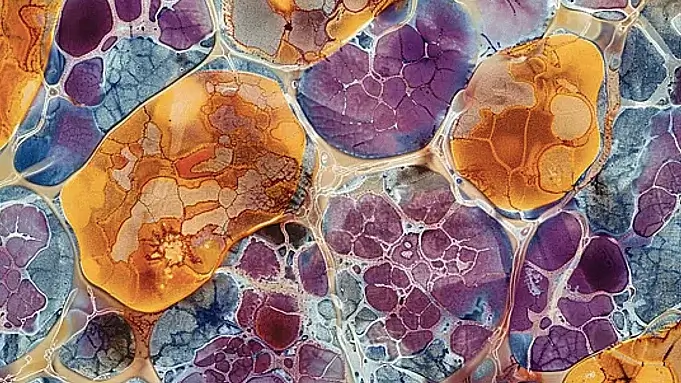Diagnosing MAFLD: What to Expect

Understanding MAFLD
MAFLD is diagnosed based on the presence of hepatic steatosis (fat buildup in the liver) along with one of the following criteria: overweight or obesity, type 2 diabetes, or evidence of metabolic dysregulation. According to research published by the National Center for Biotechnology Information, MAFLD represents a shift from the traditional classification of fatty liver diseases, placing more emphasis on metabolic health indicators.
Clinical Evaluation
The diagnostic journey begins with a thorough clinical evaluation, including:
- Medical History: Physicians review the patient’s history of obesity, type 2 diabetes, and other metabolic syndrome components.
- Physical Examination: Assessments may reveal nonspecific symptoms like fatigue or discomfort in the upper right quadrant of the abdomen.
For most patients, MAFLD is asymptomatic, which underscores the importance of routine health evaluations to identify risk factors early.
Laboratory Assessments
Laboratory tests play a key role in confirming the diagnosis:
- Liver Function Tests: Elevated levels of liver enzymes such as alanine aminotransferase (ALT) and aspartate aminotransferase (AST) suggest liver inflammation or damage.
- Metabolic Profile: Tests for fasting glucose, hemoglobin A1c, and lipid panels evaluate underlying metabolic dysfunction.
- Non-Invasive Fibrosis Scores: Tools such as the Fibrosis-4 (FIB-4) index and NAFLD Fibrosis Score (NFS) combine lab data and clinical indicators to estimate liver fibrosis risk.
For more details on understanding these tests, visit the American Liver Foundation.
Imaging Studies
Advanced imaging methods help detect liver fat and assess fibrosis:
- Ultrasound: A widely used non-invasive technique for identifying fatty liver changes. However, it may have reduced sensitivity in patients with a BMI over 40.
- Magnetic Resonance Imaging (MRI): MRI-based techniques like proton density fat fraction (PDFF) offer precise quantification of liver fat content, while magnetic resonance elastography (MRE) assesses liver stiffness.
- Transient Elastography: Also known as FibroScan, this non-invasive method evaluates liver stiffness and aids in monitoring fibrosis progression.
These imaging modalities allow clinicians to monitor the liver's health over time effectively.
Liver Biopsy
In some cases, when non-invasive methods are inconclusive or advanced fibrosis is suspected, a liver biopsy is required. This involves extracting a small tissue sample for detailed examination. While considered the gold standard for diagnosing liver diseases, biopsies are invasive and carry certain risks, so they are only recommended when absolutely necessary.
Patient Counseling and Management
After diagnosing MAFLD, it is essential to counsel patients about lifestyle changes:
- Weight Loss: A modest reduction in body weight (5–10%) has been shown to improve liver fat and inflammation.
- Healthy Diet: A diet rich in whole grains, vegetables, and lean proteins supports metabolic health.
- Regular Exercise: Physical activity enhances insulin sensitivity and reduces liver fat.
For detailed lifestyle recommendations, consult the National Institute of Diabetes and Digestive and Kidney Diseases.
Conclusion
Diagnosing MAFLD requires an integrated approach involving clinical assessments, laboratory tests, imaging studies, and occasionally liver biopsy. Early detection is vital for implementing lifestyle modifications and medical interventions to prevent disease progression.
Share this article

Dr. Paul Martin Gacrama, MD
Dr. Gacrama is a Board-Certified Internist specializing in Internal Medicine and Adult Gastroenterology. See Full Bio.
-
1. Sarin SK, Eslam M, Fan JG, Lin HC, George J, Omata M. MAFLD, patient-centred care, and APASL. Hepatol Int, 2022.
-
2. Méndez-Sánchez N, Bugianesi E, Gish RG, Lammert F, Tilg H, Nguyen MH, Sarin SK, Fabrellas N, Zelber-Sagi S, Fan JG, et al. Global multi-stakeholder endorsement of the MAFLD definition. Lancet Gastroenterol Hepatol, 2022.
-
3. Yamamura S, Eslam M, Kawaguchi T, Tsutsumi T, Nakano D, Yoshinaga S, Takahashi H, Anzai K, George J, Torimura T. MAFLD identifies patients with significant hepatic fibrosis better than NAFLD. Liver Int, 2020.
-
4. Tsutsumi T, Eslam M, Kawaguchi T, Yamamura S, Kawaguchi A, Nakano D, Koseki M, Yoshinaga S, Takahashi H, Anzai K, et al. MAFLD better predicts the progression of atherosclerotic cardiovascular risk than NAFLD: generalized estimating equation approach. Hepatol Res, 2021.
-
5. Yu C, Wang M, Zheng S, Xia M, Yang H, Zhang D, Yin C, Cheng N, Bai Y. Comparing the diagnostic criteria of MAFLD and NAFLD in the Chinese Population: a Population-based prospective cohort study. J Clin Transl Hepatol, 2022.
-
6. Ayada I, van Kleef LA, Alferink LJM, Li P, de Knegt RJ, Pan Q. Systematically comparing epidemiological and clinical features of MAFLD and NAFLD by meta-analysis: focusing on the non-overlap groups. Liver Int, 2022.
FIB-4 Score Calculator The FIB-4 score is a valuable tool that helps individuals with fatty liver disease assess their risk of liver fibrosis. As fatty liver conditions...
Can Supplements Reverse Malnutrition-Associated Fatty Liver? Malnutrition-associated fatty liver disease (MAFLD) arises when poor dietary intake...
How Ultrasound Imaging is Used to Diagnose Fatty Liver Disease As I stood in the dimly lit examination room last week, watching the ultrasound screen...

You might enjoy more articles by
Dr. Paul Martin Gacrama, MD
 Disease
Disease Diets
Diets Recipes
Recipes Supplements
Supplements Management
Management Calculators
Calculators Quizzes
Quizzes Glossary
Glossary
























